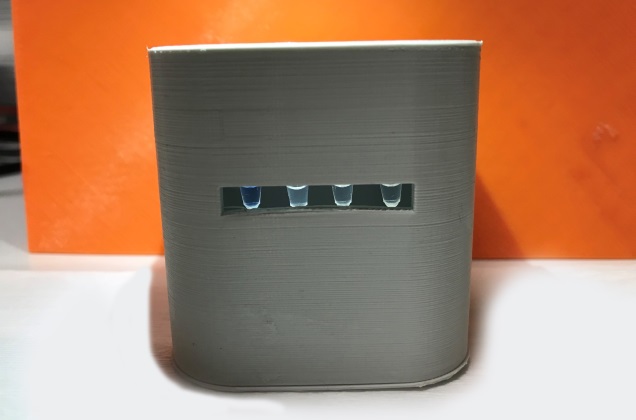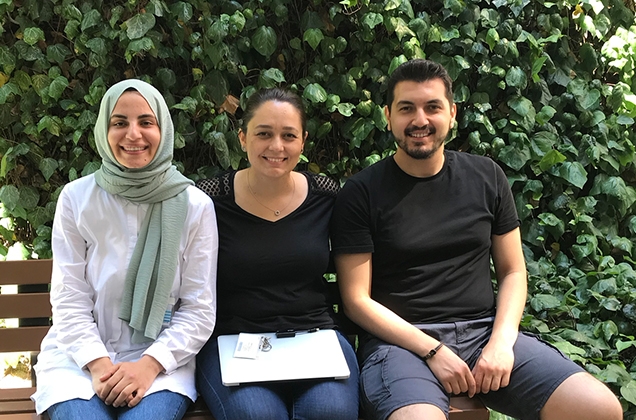29/07/2020
Sabancı University students Doğukan Kaygusuz and Sümeyra Vural, under the guidance of Sabancı University Faculty Member Meltem Elitaş, developed a biosensor that enables consumers to conduct DNA-based tests such as GMO analysis and identification at home.

Sümeyra Vural, Meltem Elitaş, Doğukan Kaygusuz
The sensor allows the quick identification of GMO-foods in homes, fields and manufacturing facilities.
The pocket-sized biosensor designed at Sabancı University for low cost and domestic use can perform many DNA-based tests such as GMO analysis, identification, and disease diagnosis and treatment.
Identifies GMO DNA in 30 minutes
The Sabancı University graduate students involved in the project say that the key purpose of the project is GMO identification and that the device is able to identify DNA in almost all sampes provided to the system. DNA diagnosis, which takes at least 160 minutes in the laboratory environment, can be completed in just 30 minutes with the new biosensor. The Sabancı University graduate students who developed the device said the following: “This device may be used for GMO detection as well as DNA diagnostics such as blood diseases, infections and patient identification. Soy and maize are the most common GMO crops in the world. This sensor is useful for a diverse group of potential users from consumers who wish to know whether a food containing soy or maize has GMO to a nurse who needs to diagnose a bacterial infection. We plan to take part in a EU project with this device in the near future.”

A patent application has been made for the biosensor developed by Sabancı University Faculty of Engineering and Natural Sciences graduate students, and a paper has been published in a high-impact journal.
A patent application has been filed for the biosensor used to detect GMOs in soy and maize products. During the application process, it was discovered that the biosensor has no equivalent in Turkey, and is one of the lowest-cost and easiest-to-use biosensors worldwide. The prototype will be further developed into a final product following international manufacturing norms and marketed as soon as possible.
The team behind the TÜBİTAK-supported project: The team is composed of Sabancı University Mechatronic Engineering master's student Doğukan Kaygusuz, Molecular Biology, Genetics and Bioengineering master's student Sümeyra Vural and Faculty of Engineering and Natural Sciences Member Meltem Elitaş in addition to Sabancı University Nanotechnology Research and Application Center researcher Stuart Lucas and Yeditepe University faculty member Ali Özhan Aytekin. A paper has been published in Biosensors and Bioelectronics, which has an article impact value of 9,518. The paper is available here.
The project was made possible with the extensive support of Sabancı University Faculty of Engineering and Natural Sciences Dean Professor Canan Atılgan and Sabancı University Nanotechnology Research and Application Center Director Professor Fazilet Vardar, who have had confidence in the Biomechatronics Researcg Group since the beginning. The project is also a perfect illustration of the Sabancı University philosophy to "create and develop together."




